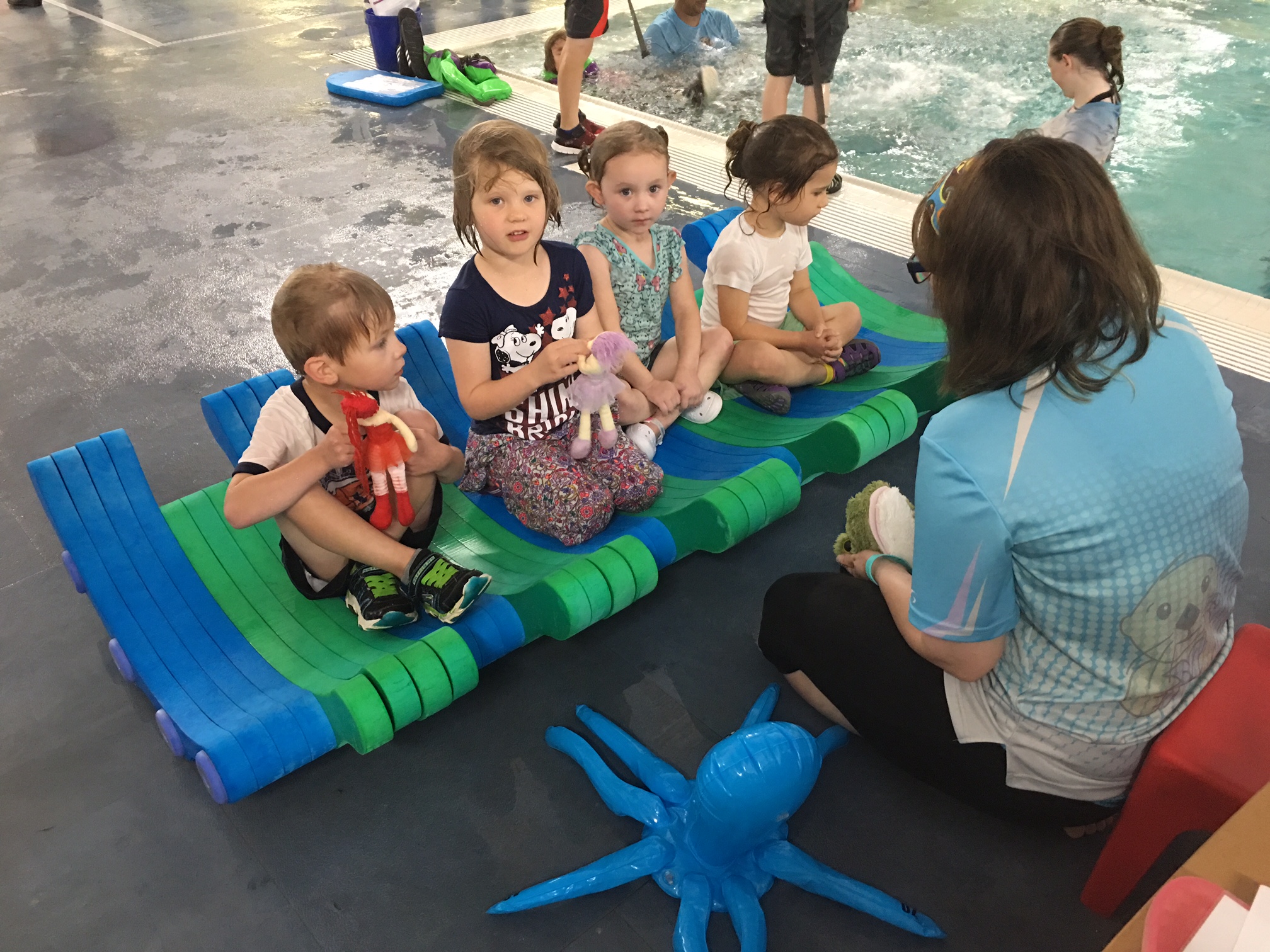
Let’s set the scene.
It’s the first day of your beginners’ swimming class. You and other parents are arriving with your little swimmers.
Your little swimmer is clinging to your legs and sobbing – obviously anxious about the adventure ahead. You notice that you’re not alone. There are a few other clingy little swimmers. And, as you approach the pool, your anxious child will not enter the water.
What do you do?
You and your child’s instructor work together to resolve your child’s anxiety.
Your instructor should inquire about your why your little swimmer is anxious.
There may be memories of a bad pool or water experience. Your swimmer may be intimidated by the size of the pool. Or perhaps your child is simply overwhelmed by the unknown of what will happen during their very first swim lesson. Your child’s anxiety may be from something totally illogical to an adult, like thinking there are monsters in the pool water. It could also be something as simple that you didn’t see such as swallowing a mouthful of soapy bath water.
If you know the source of your little swimmer’s anxiety, it’s great. That knowledge will give you and the instructor a starting point for easing your child’s anxiety. But sometimes you simply don’t know the why part of the equation.
Regardless of what you know about the source of anxiety, there are some things you can do to help your little swimmer.
During the first lesson:
- Everyone should take it slow.
- Parents and instructor should gently encourage the anxious swimmer to get in the water.
- The instructor should spend equal time with all swimmers in the class – not paying special or more attention to the anxious swimmer.
- Assure the child that he/she will not have to put their head underwater.*
- Don’t give up.
Before the next lesson:
- Take your anxious swimmer to the neighborhood (or your own) pool to play.
- Slowly encourage your little swimmer to do more things in the water.
- Do some of the swim lesson exercises (like putting their face in the water, bobbing and holding their breath) in the bath tub.
- Don’t give up.
For the next lesson:
- Arrive at the pool a little earlier. (allow your child to acclimate to the appearance, the noise and the smell of the pool)
- Be persistent that they enter the water.
- Assure your child that it will be fun like when you played in the neighborhood pool.
- Don’t give up.
During this process, remember:
- Each little swimmer becomes comfortable with swimming lessons at a unique pace.
- Don’t rush them.
- Don’t give up.
Don’t give up. I cannot say this enough.
Your child may overcome anxiety quickly or it may take 5-6 lessons. Some children’s water confidence may not blossom until they’ve practically completed their lesson term.
There are also children who are so anxious about swimming, water or the pool that they must start by very simply sitting with you on the side of the pool dangling as you both dangle your feet in the water. Slowly you progress, getting ankles, legs and finally hips in the water. Before you know it, your child will be standing in neck-high water and loving it.
Using bath time before putting soap in the water is a good time to reinforce things with your child like the ability to hold their breath under water. The shower is especially good for this because they may be doing it already but haven’t connected holding their breath in the shower with how they hold their breath in the pool for swimming lessons.
It is critically essential that your child learns to swim so you must be persistent in helping them to be successful – even when they feel like giving up.
*It is important that you never force your child to go under the water. You may feel “If I just make them do it, they will see how easy it is.” But that approach fails more times than not. The most important thing is that they gain the confidence to relax and do it on their own.


Conversations